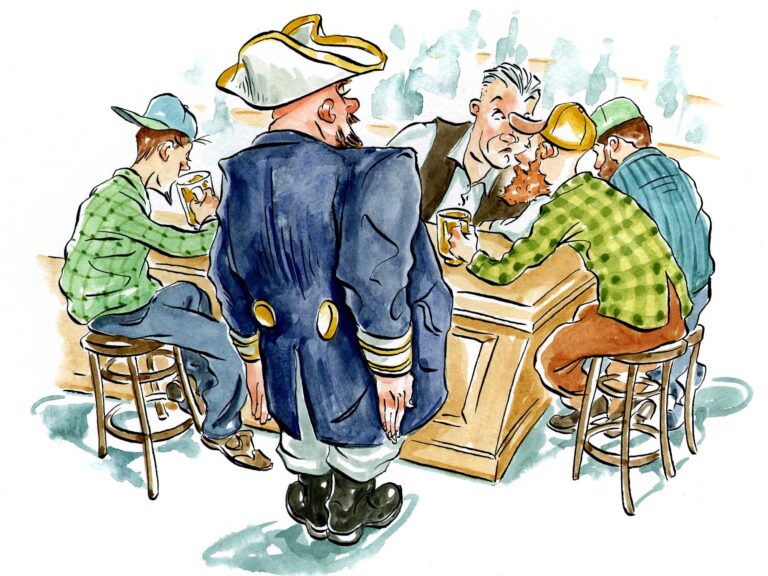For decades, sport-fishing captains have been backing down to catch big speedy fish, like marlin and sailfish. Typically, the skipper faces aft from the flybridge, a throttle lever in each hand, black smoke belching from the diesels as he reverses hard, and green water bulging over the transom, drenching the crew.
The technique is effective in assisting the angler to gather line and get to the leader quickly so the crew can execute a legal release of the fish. In tournaments, this allows the team to catch and release fish rapidly and amass a great number of points in the shortest time possible. But this technique can also be dangerous, especially in an open boat. Reverse too hard and you’ll swamp the boat. Here is some salient advice for backing down and how to chase fish safely.
The Right Boat: Avoid backing down in an open boat, such as a center-console. There’s no way to keep water from flooding forward if you take a big wave over the transom. Besides, in center-consoles you can chase fish going forward. Backing down is only for larger cabin boats.
Tip: In a center-console, place the angler next to the helm while motoring forward on a big fish, keeping the line at about 10 or 2 o’clock, depending on what side the angler is on. This allows the skipper to easily see the line.
Drain the Cockpit: Even the largest sport-fishing boats are likely to take on water when backing down. This means the boat should have large, one-way scuppers to drain the cockpit as rapidly as possible. Also keep the transom door, salon door and deck hatches battened. Secure stray gear, like buckets, dock lines and towels, that might trip or entangle crew or stop up a scupper.
Tip: Have at least two bilge pumps and make sure the automatic float switches are operable. Also add a high-bilgewater alarm to alert you to danger.
Take It Easy: Avoid getting heavy-handed with the throttle while backing down, particularly when the seas are up. If you are reversing down-sea, you can pick up the speed. When backing into a head sea, you might need to time the waves, applying heavy throttle between waves, and then slowing as waves approach.
Tip: Since cooling-water pickups face forward, reversing for long periods can overheat the engines. So be sure to keep your eye on the water pressure and engine-temperature gauges.
Spin Around: Sometimes, no matter what size the boat, you need to chase the fish going forward. One such situation is when you hook a big fish that threatens to empty the reel of line and you can’t keep up with it going backward. Be aware, however, that you need to make this decision early because turning the boat around can drain the spool of 200 yards of line. Keep the angler in the cockpit with the line pointing at 10 or 2 o’clock. Once sufficient line is back on the reel, spin the boat around and resume the chase in reverse.
Tip: If you plan to back down hard, avoid adding a transom swim platform. These can dig into waves, rip loose or pull the stern underwater when reversing hard.









